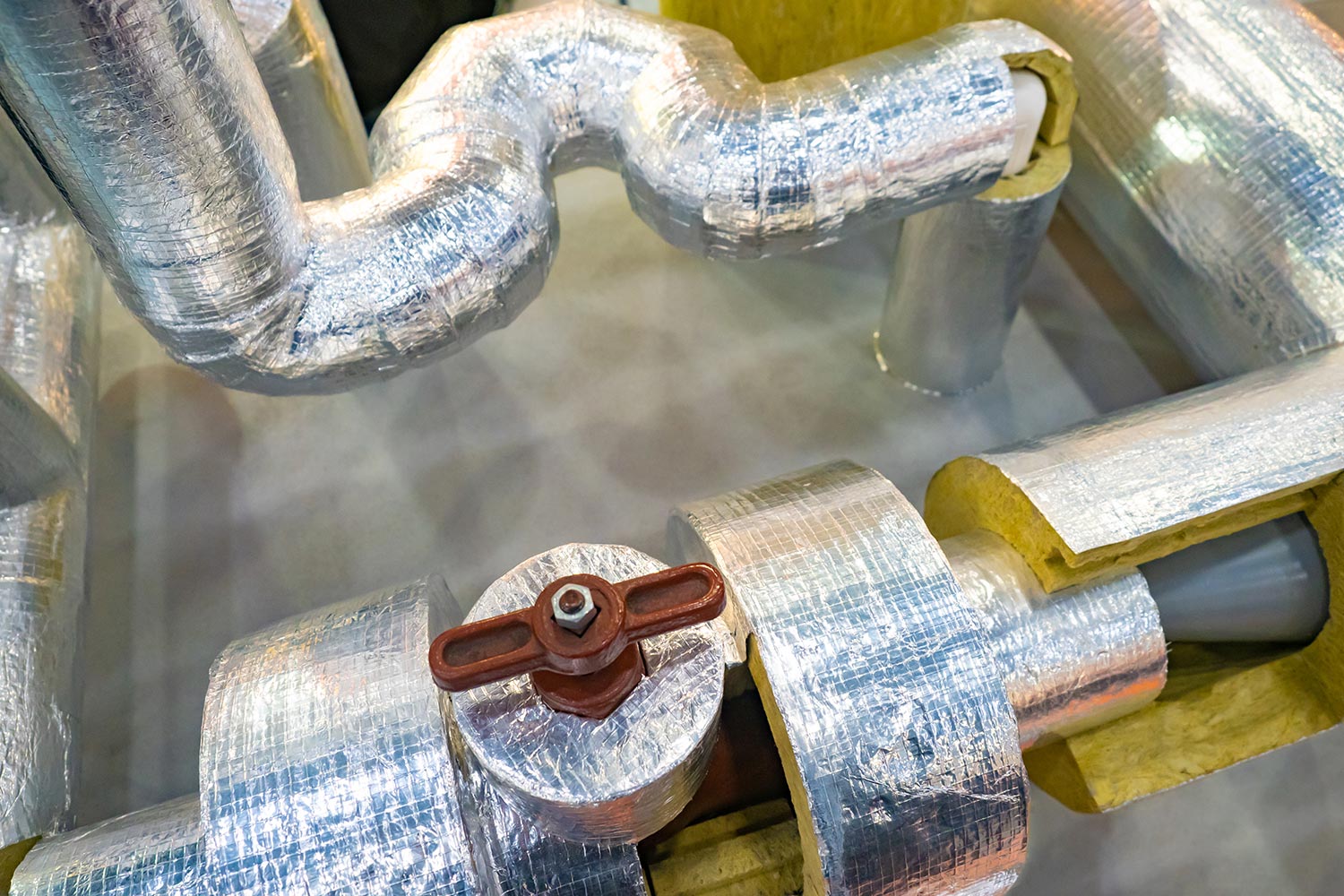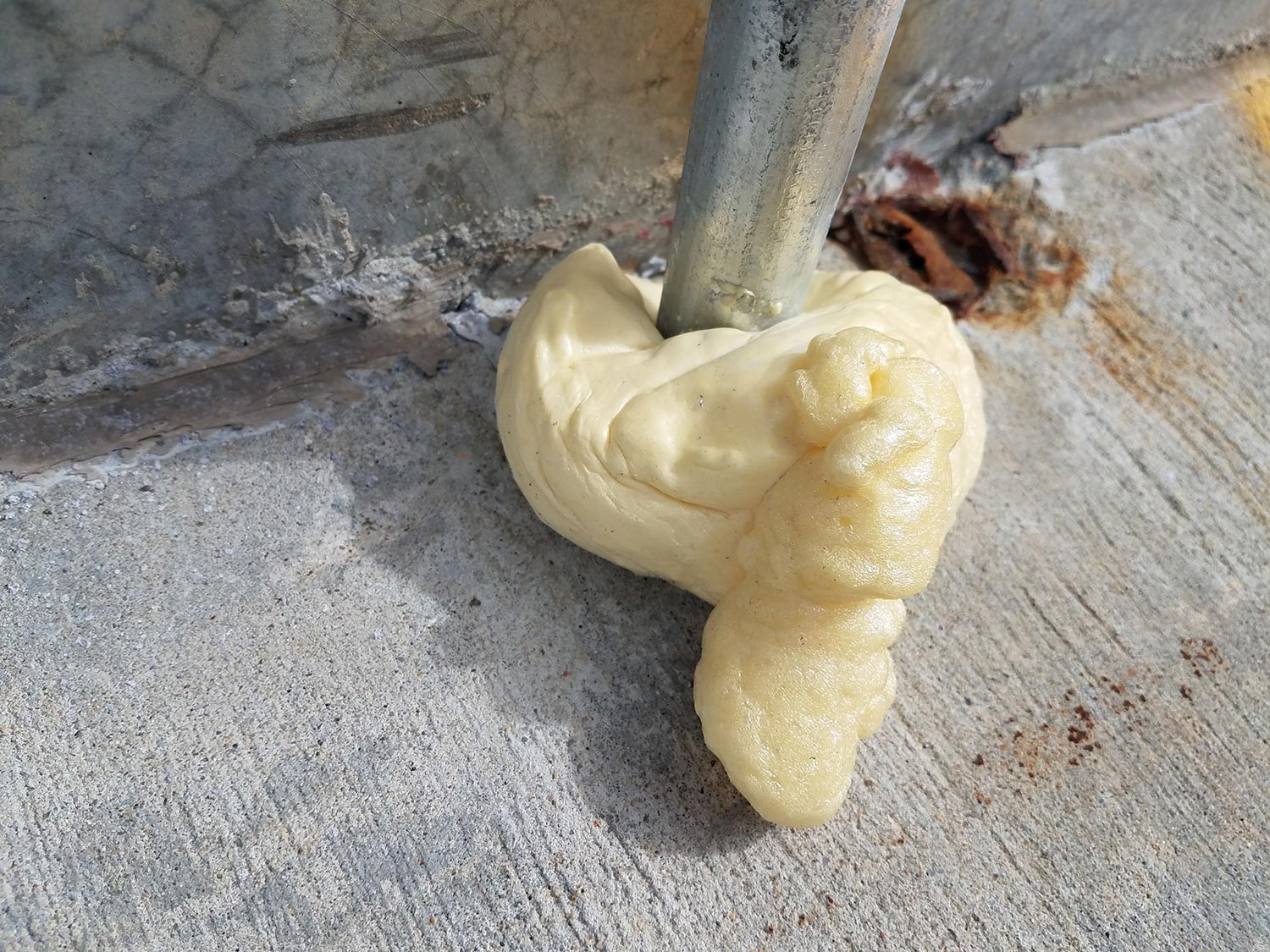Water mains are regularly the most exposed water pipes in a residential plumbing system. Thus, you are wondering how to insulate a main water line pipe. We combine industry professional knowledge and up-to-date research to answer your question thoroughly in this post.
To insulate a main water line, follow these directions:
- Locate and Gain Access to the Entire Line
- Choose An Insulation Technique
- Wrap Insulation
- Tie Up if Needed
- Check Work Yearly
Keep reading the rest of this post for details on each of the above steps. This guide includes all you need to insulate your water main fully and a helpful YouTube video. To conclude, we answer several questions related to the topic of this post.

How To Insulate a Main Water Line Pipe
Main water lines are essentially the same as supply water lines, except for their larger diameter. This diameter is advantageous because the additional water makes the chance of freezing lower. However, at the same time, should the main freeze, the results can be costly and disastrous.
Further, main lines are sometimes casually laid in crawlspaces or basements without the same care that is paid to the many supply lines throughout your home. Unfortunately, this can make insulating main lines more difficult.
Locate and Gain Access to the Entire Line
First, you want to locate and gain access to the entire main water line. Often, this involves removing debris from the crawlspace, cleaning up or organizing your basements, or even trimming back plants should the main line be outside in any capacity.
Choose An Insulation Technique
Now it is time to choose an insulation technique. To help introduce the choices, watch this useful and short YouTube video:
However, this video only shows insulation on a very thin supply line pipe, not the larger diameter typical for main lines.
Further, while the pre-formed and pre-taped insulation installs very easily, the sticky edges are prone to eventual failure. Also, depending on the diameter of your main line, it may be difficult to get pre-formed pipe insulation that is a proper fit.
Thus, we recommend using R-7 or R-11 fiberglass batts, tape, and twine to insulate your main line. This technique is very long-lasting, effective on corners and turns, and is only slightly more complicated than using pre-formed pipe insulation. It has the major advantage of no consistent seam.
Click here for foil-faced fiberglass batts from Amazon.
Note that it is wise to use fiberglass faced with foil or other material as this will help act as a vapor barrier. The vapor barrier improves the insulative properties of the whole assembly and helps prevent condensation.
Wrap Insulation

Now that the water main is fully exposed and accessible and you have chosen an insulation technique, it is time to insulate your pipes.
Here, we provide step-by-step directions on how to wrap your pipes using R-7 or R-11 fiberglass batts and twine. If you choose to use pre-formed fiberglass or other material, tape the seams to ensure long-lasting and effective insulation is probably worth your time.
Click here for vapor barrier tape from Amazon.
For fiberglass batts, first, be sure that you have personal protective equipment for your breathing and eyes. Now, wrap the insulation around the pipe so that there is always a few inches of overlap between each concentric wrap.
For ease, periodically tape the batts in place. Also, be sure to tape any seam. The goal is to get a tight fit without compressing the batts.
Once the batts are in place, add twine. This twine should be snug but not so tight that it compressed your batts. The twine acts as an added protection to keep the wrap in contact with your pipes and is highly insulative.
Click here for insulation twine from Amazon.
To add the twine, wrap it around the insulation, tieing it together periodically so that it stays in place. The final product will look like a network of twine where each strand is about 8-inches from the next.
Tie Up if Needed
As mentioned above, it is not uncommon for main lines to be lying on crawlspace floors haphazardly. If this is the case, it is smart to support the main line, so it is touching the ground as infrequently as possible.
Click here for wire from Amazon.
An easy way to accomplish this is with some wire. Run the wire under the water line and affix it on either end with screws or other fasteners. Often you can affix it to floor joists or other home structures.
If your main water line is a stiff, rigid material, be sure to only gently support the pipe. If you over-torque the rigid pipe, it may lead to breaks.
Check Work Yearly
Importantly, you should not wrap your main water line and assume that the work is done for good. Instead, periodically check your wrapping job to ensure that no insulation has fallen or failed.
Should I insulate the water main?

Yes, you should insulate your water main. In hot climates, the cold water in your main will attract condensation. This liquid water can lead to mold, mildew, and potentially rot. Insulation will help stop the condensation.
The insulation will help keep your main line from freezing in cold climates. A frozen main line will cut the water off to your entire house and has the potential to cause some serious and costly damage.
Should all water pipes be insulated?
Generally, it is advised to insulate pipes that are not in conditioned space. According to the Department of Energy, energy savings are particularly important for hot water pipes. However, cold water pipes can cause condensation, so they should be insulated for that reason instead.
What is the best pipe insulation to prevent freezing?
The best pipe insulation to prevent freezing is whatever insulation has the highest R-value. In addition, it is important the insulation fully covers the pipe, including corners, joints, and insulation seams.
For this reason, we recommend using fiberglass batts, tape, and twine. Here, we advise on using R-7 or R-11 batts, but you can use R-19 or R-30 batts for even more protection.
Can you spray foam over water pipes?

Yes, you can! If you are spray foaming a stud bay or other area and water pipes are in the way, feel free to foam away. The foam will expand around the pipe and insulate it.
Be cautious; if you get foam behind the water pipe, the foam may expand and push the pipe out. Therefore, use your fingers or a small tool to help hold the pipe in place while the foam is expanding.
How do I keep my water pipes from freezing?
In addition to insulation, there are a few other ways to keep your pipes from freezing. Namely, you can add heat cable, keep your home heated, leave a faucet dripping, open doors and cabinets, cover hose bibs, and disconnect and flush water lines when possible.
Add Heat Cable if Required
Heat cable is a plug-in cord that uses electricity to create heat. They are sold in many different lengths and configurations.
Click here for a heat cable from Amazon.
Generally, adding heat tape is a simple process. All you need is some zip ties and the tape itself. Be sure to get a long enough tape run and make sure that you have a solid plan for how to plug the tape in when winter comes.
Heat Your Home
Heating your home means that even if you are away on vacation, you want to be paying to keep the indoor temperature up. For very cold snaps, keep the temperature at least 60-degree. The indoor heat will bleed out to wherever your pipes are and help prevent them from freezing.
Let a Faucet Drip

Sometimes, it is a handy strategy to leave a faucet on a constant drip in your house. This drip will keep the water moving in your pipes and allow any ice that forms more room to expand. This simple step can save you thousands on potential busted plumbing.
Open Doors and Cabinets
If you are worried about specific pipes freezing, you can always open up doors or cabinets that lead to those pipes. This will allow more of your home's interior heat to contact those pipes and help prevent freezing.
Cover Hose Bibs
Click here for hose bib covers from Amazon.
For exterior plumbing, be sure to cover all exterior hose bibs with insulation caps in the winter and to disconnect all houses. This will help these areas from freezing.
Disconnect and Flush Pipes Where Possible
Often, exterior plumbing and irrigation lines are equipped with a shut-off valve. For these situations, be sure to shut off the water and drain or flush the lines before winter sets in. Often, you will need to hire a professional to blow the lines for you.
If you notice that a specific area of pipes freezes routinely, it might be worthwhile to install a new shut-off valve and drain apparatus. The cost of these additions will usually be more than recovered in savings when it comes to fixing water leaks.
Additional Reading
To learn more about insulating water pipes, read these great HVAC Seer articles:
In Closing
In this post, we answered how to insulate a main water line. We include a step-by-step guide and provide a recommendation for the best insulation technique. To conclude, we answer several related questions. Good luck!






